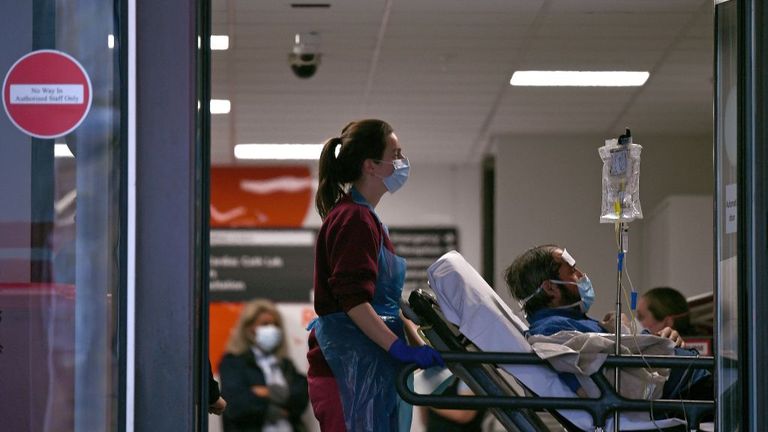It’s been six months since COVID-19 began disrupting – and ending – lives in the UK. So: time to take stock.
The graph below shows the official shape of the UK’s epidemic. According to government data, more than 330,000 people have tested positive for coronavirus and around 42,000 of them have died.
Even at this early stage, we encounter complications. There’s more than one way of measuring deaths, for instance: if you take death registrations, which are made by GPs, then the figure for deaths could be as high as 60,000.
There are also different ways of thinking about infections.
Researchers at Imperial College London studied more than 100,000 people in England and found almost 6% of them had antibodies to the virus. If repeated across the whole population, it could mean around four million people in the UK had COVID-19 at some point.
Indeed, one recent estimate suggested there were more than 100,000 infections every day in late March. It’s hard to base firm conclusions for behaviour on this, as we can’t be sure how long immunity lasts, but it does give us a way of putting the daily numbers we get now into perspective.
Last week’s Office for National Statistics survey found 2,200 people in England are catching the virus every day. That’s a long way from 100,000.
This number also helps us think about one of the most important questions about the pandemic: the decline in the number of infected people dying.
Researchers at Oxford university found the case/fatality ratio had fallen from 6% on 24 June to 1.5% on 5 August, a four-fold drop in under six weeks.
Is the virus getting weaker? Are we getting stronger? Or has some other change altered its effect?
Of course, it’s possible that there hasn’t actually been a change at all, but instead a change of measurement, caused by the huge increase in the UK’s testing capacity.
If you look at the daily number of tests in the graph below, you can see how few were carried out early on. At the peak in April, testing was mainly limited to hospital patients and staff. Community testing only really began in May.
This means that for the first few months of the epidemic the UK was identifying only the sickest patients. More of them died, so the case fatality ratio was higher. Its decline isn’t good news, just a greater awareness of the size of the problem.
Nevertheless, we shouldn’t write off the change in death rates – or our own ability to adapt and learn – that easily.
One reason for the decline in the proportion of the deaths is the rapid improvements made by doctors in treating the virus.
The fatality ratio in hospitals in England fell from an average of 5.2 at the beginning of April to 1 at the start of August. New techniques and new drugs like dexamethasone have made an enormous difference, even for the very ill.
Another important change is the age of new infections. At the peak of the UK’s outbreak in April, 75% of people catching the virus were aged over 75, but in recent weeks the balance has shifted, with more found among working-age people.
They don’t get hit as badly by COVID-19, which brings the case fatality ratio down.
Of course, this doesn’t mean our problems are over.
The fear among government scientists is that if the outbreak gets out of control among young people, it will eventually leak into the more vulnerable parts of the population. What might look like a divergence between cases and deaths is actually just a larger lag.
To find the answer to that, the best places to look are France and Spain, where cases are rising fast, but deaths and hospitalisations are still low.
But whatever happens, we should remember: this isn’t March all over again
We test so much more. We know so much more about treatment. And we all understand how to change our behaviour.
That is cause for optimism as we face the next six months.


